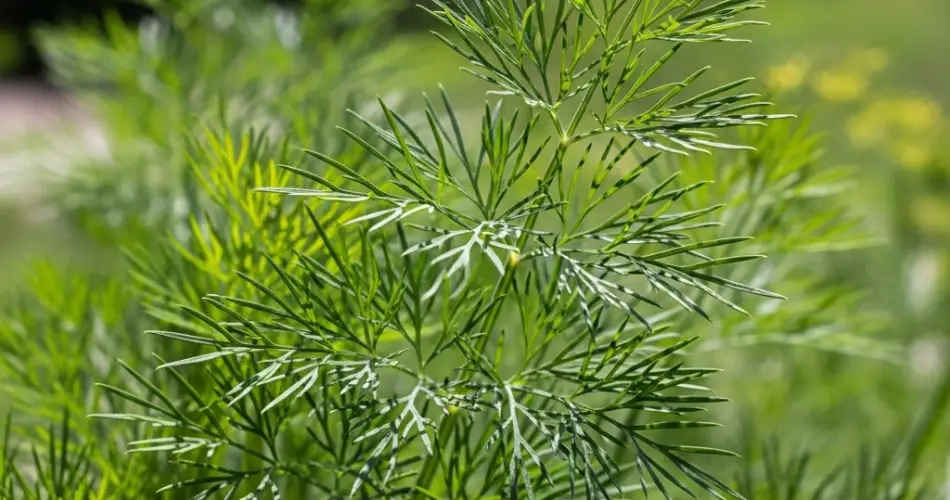Dill is a fragrant and fast-growing herb that adds a fresh, tangy flavor to many dishes, especially in pickling, salads, and fish recipes. While it’s relatively easy to grow, giving dill the right nutrients through organic fertilization can significantly enhance its growth, leaf production, and flavor. Whether you’re growing dill in containers or directly in the ground, using the right organic fertilizers ensures a healthy plant and bountiful harvest.
This guide explores the best organic fertilizers for dill, when and how to apply them, and tips for maintaining healthy, productive dill plants all season long.
Understanding Dill’s Nutrient Needs
Dill (Anethum graveolens) prefers well-draining, moderately fertile soil and full sun. It grows quickly and doesn’t require heavy feeding, but a gentle boost of nutrients can make a noticeable difference, especially if the soil is depleted or if you’re growing it in containers where nutrients are limited.
Dill responds best to a balanced nutrient profile, with a slight emphasis on nitrogen (N) for healthy leaf development. Phosphorus (P) and potassium (K) are also important for root health and overall plant strength but in smaller quantities.
Top Organic Fertilizers for Dill
Here are the best organic fertilizers that support dill’s growth, all of which are safe, natural, and effective when applied correctly.
1. Compost
Well-rotted compost is a foundational fertilizer for any herb garden. Rich in organic matter and beneficial microbes, compost improves soil structure, enhances moisture retention, and provides a slow, steady release of nutrients.
How to use: Mix compost into the soil before planting dill. A 1–2 inch layer worked into the top 6 inches of soil is ideal. You can also top-dress around the base of the plant mid-season to refresh nutrients.
2. Worm Castings
Worm castings, also known as vermicompost, are a powerhouse of nutrients in a gentle, plant-friendly form. They contain essential micronutrients and beneficial bacteria that improve soil health.
How to use: Mix a small amount (about 1 cup per plant or per square foot) into the planting hole or sprinkle around the base of existing plants. Water after application to help the nutrients reach the root zone.
3. Fish Emulsion
Fish emulsion is a quick-acting, liquid organic fertilizer high in nitrogen, ideal for leafy herbs like dill. It’s especially useful in the early stages of growth when dill needs a nitrogen boost to develop a lush canopy.
How to use: Dilute according to label instructions—usually 1 tablespoon per gallon of water—and apply every 2 to 3 weeks. Avoid overuse, as too much nitrogen can lead to excessive leaf growth with weaker flavor.
4. Seaweed Extract
Seaweed extract provides trace minerals, growth hormones, and potassium. While it’s low in nitrogen, it enhances plant vigor, supports stress resistance, and boosts root development.
How to use: Use as a foliar spray or soil drench, diluted per the package directions. Apply every 2–4 weeks, especially during periods of stress or slow growth.
5. Alfalfa Meal
Alfalfa meal is a mild, balanced fertilizer that contains nitrogen and growth-stimulating compounds. It breaks down slowly, enriching the soil over time.
How to use: Mix ½ cup into the soil per plant or sprinkle lightly around established plants. Water well after application.
6. Composted Poultry or Cow Manure
Fully composted manure is a good slow-release fertilizer that adds organic matter and nutrients. Be sure it is well-aged to avoid burning the delicate roots of herbs like dill.
How to use: Mix into the soil before planting or use as a side dressing during the growing season. Avoid fresh manure, which can be too strong and contain pathogens.
When to Fertilize Dill
-
At Planting: Mix compost or worm castings into the soil to provide a strong start.
-
Mid-Growth: About 3–4 weeks after planting, apply a gentle liquid fertilizer like fish emulsion if growth seems slow or the leaves pale.
-
Monthly Maintenance: Use compost tea, seaweed extract, or another mild organic fertilizer once a month to keep the plant healthy and productive.
Avoid over-fertilizing, especially with high-nitrogen sources. Too much nitrogen can lead to tall, leggy plants with reduced aroma and flavor. In most cases, less is more when it comes to feeding herbs.
Fertilizing Dill in Containers
Dill grown in pots has limited access to soil nutrients and therefore benefits from more regular feeding. Use a diluted liquid organic fertilizer every 2 to 3 weeks, and refresh the topsoil with compost or worm castings monthly. Ensure the pot has good drainage to avoid waterlogging and nutrient buildup.
Final Tips for Healthy Dill
-
Rotate Crops: Avoid planting dill in the same spot each year to prevent soil nutrient depletion.
-
Avoid Synthetic Fertilizers: These can cause rapid growth that diminishes flavor and may disrupt soil health.
-
Water Wisely: Combine good fertilization with consistent watering. Dill prefers evenly moist soil but doesn’t tolerate soggy roots.
Conclusion
Growing dill organically is easy when you understand its light feeding needs and use the right materials. Compost, worm castings, fish emulsion, and seaweed extract all provide natural nutrients that support healthy, flavorful growth. With regular, balanced feeding and good garden practices, you’ll enjoy a steady supply of dill for culinary use throughout the season.



